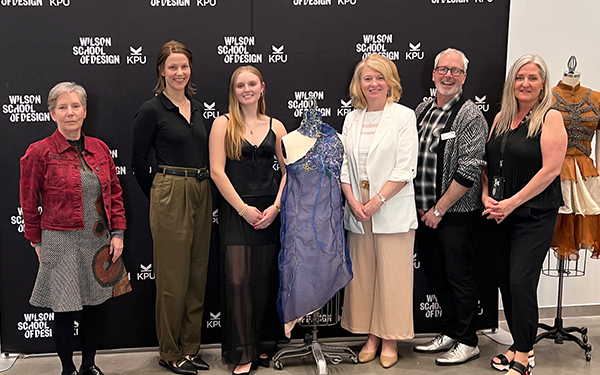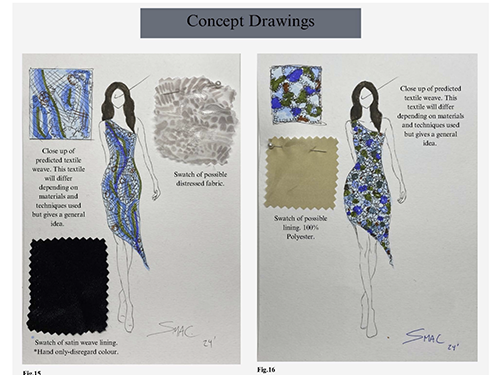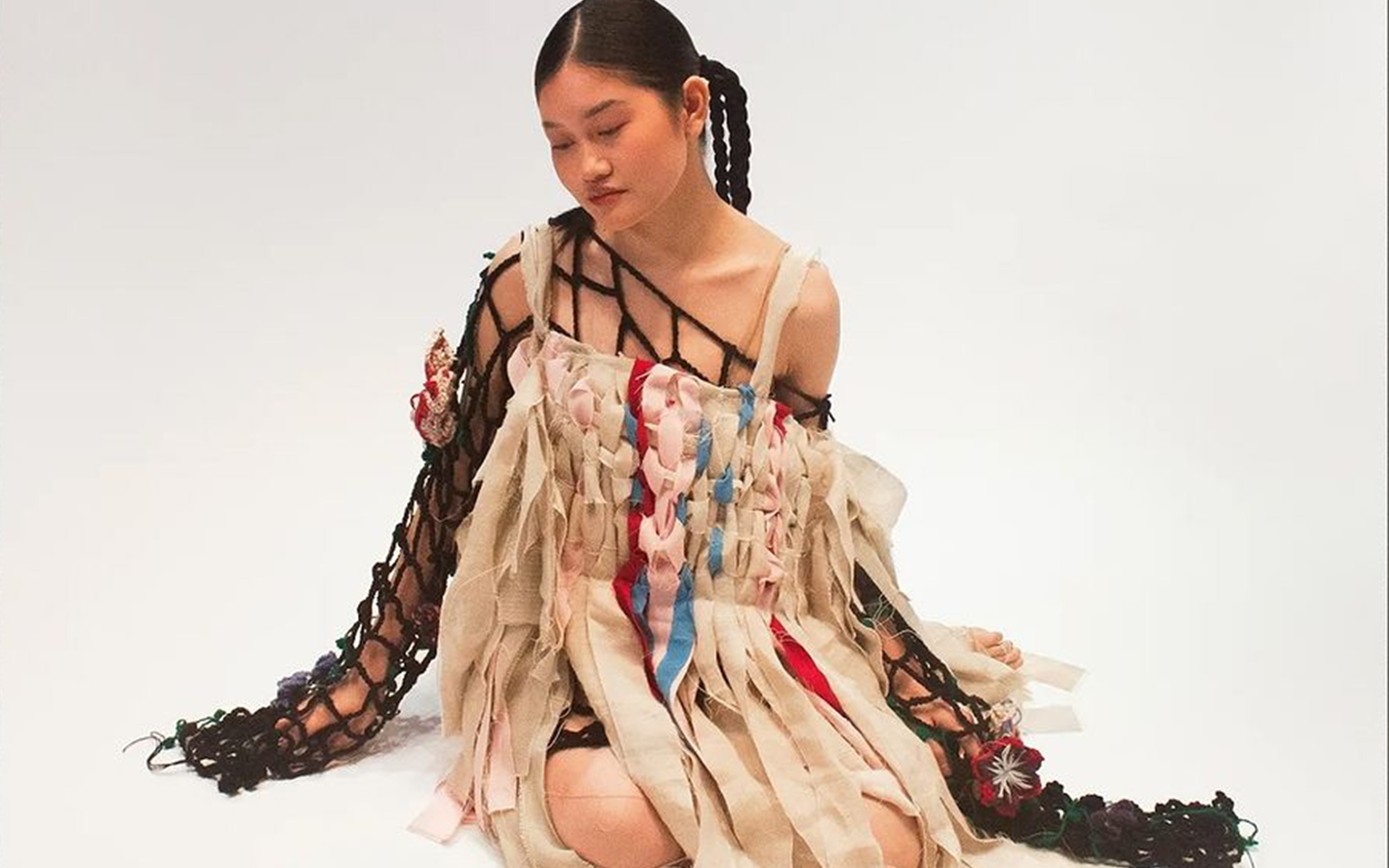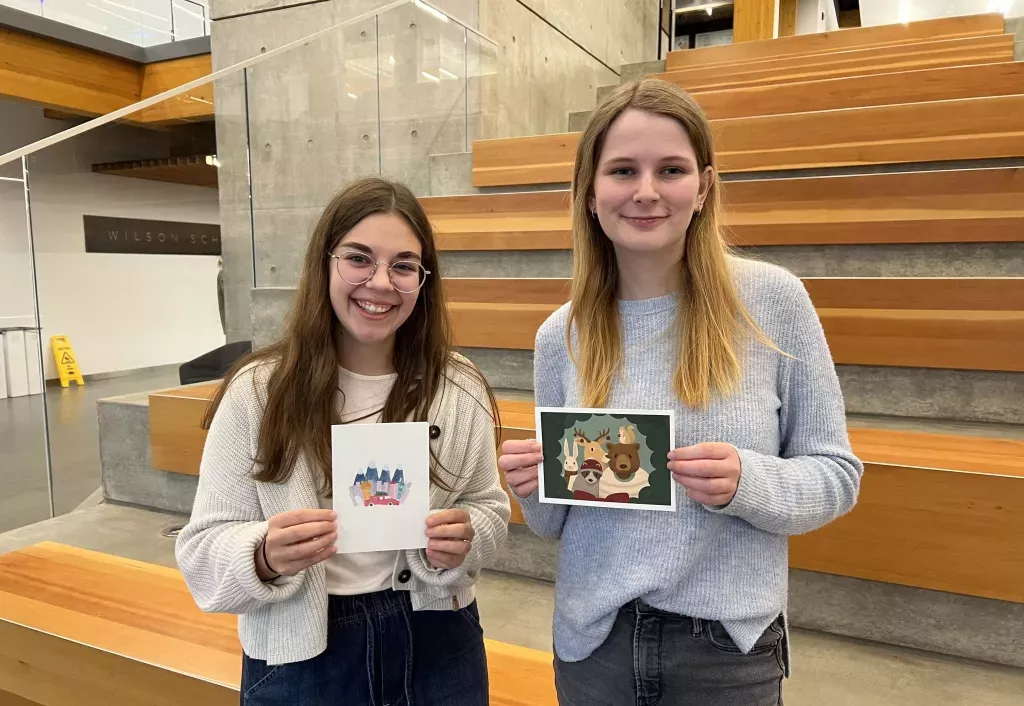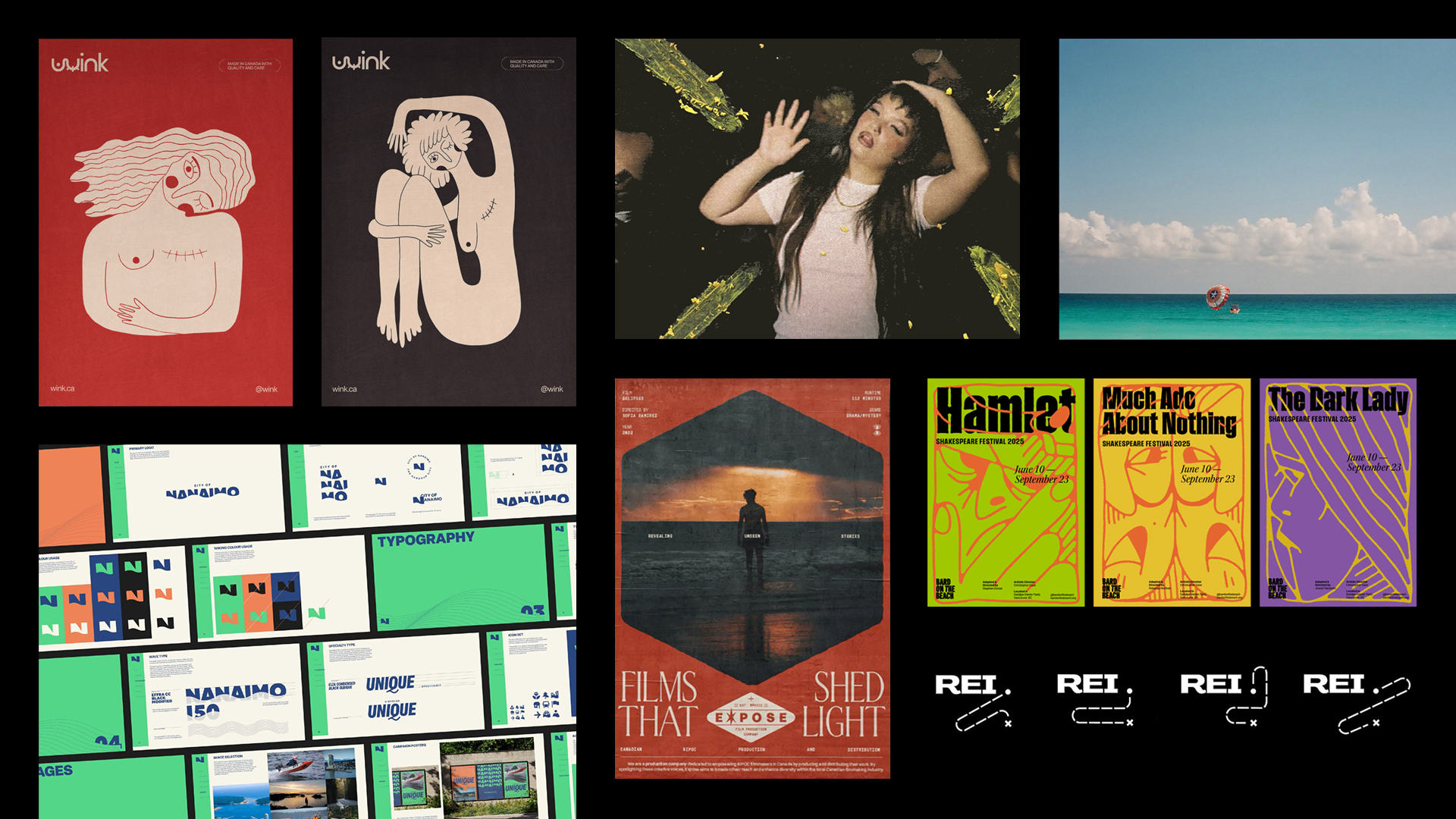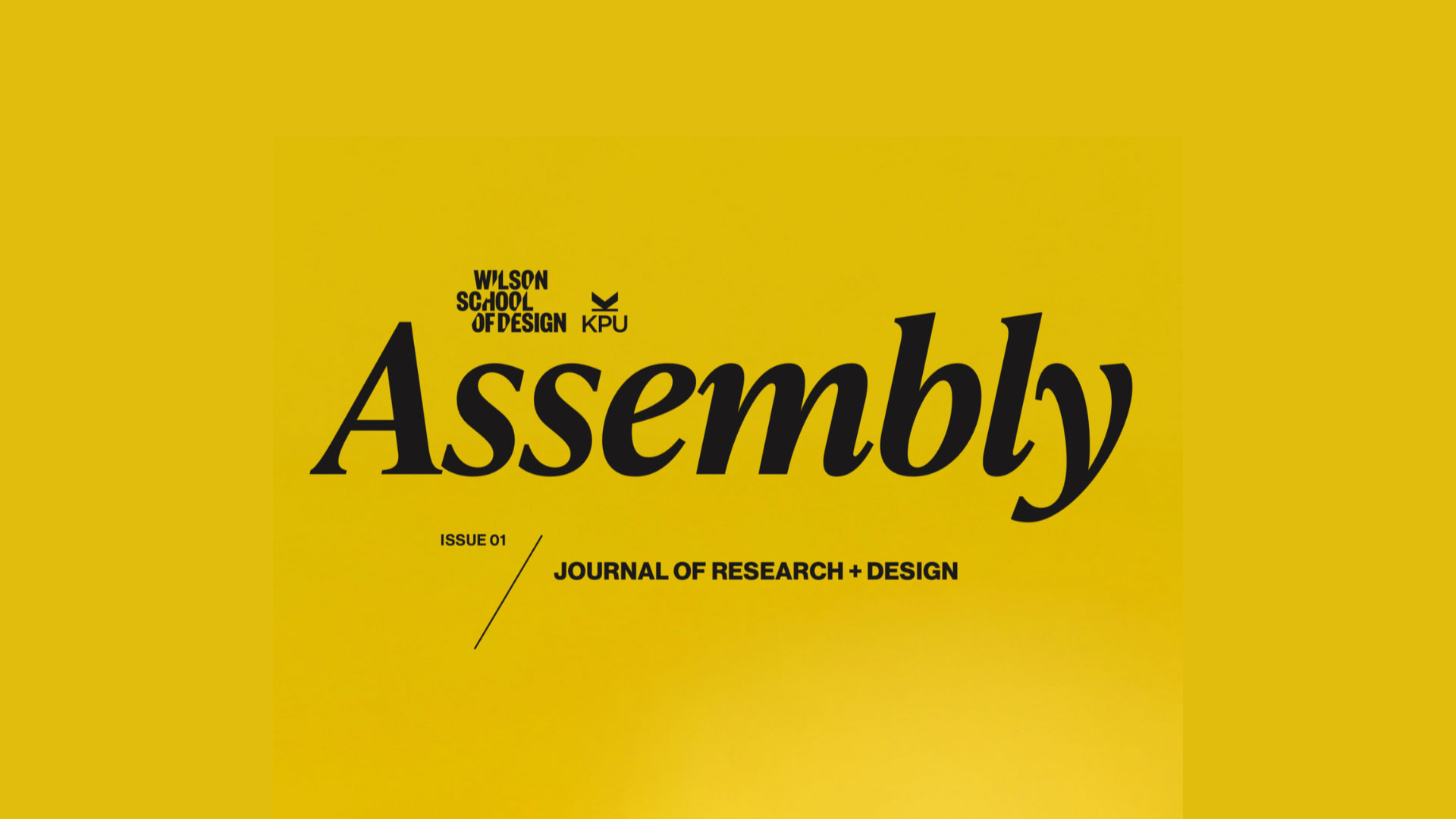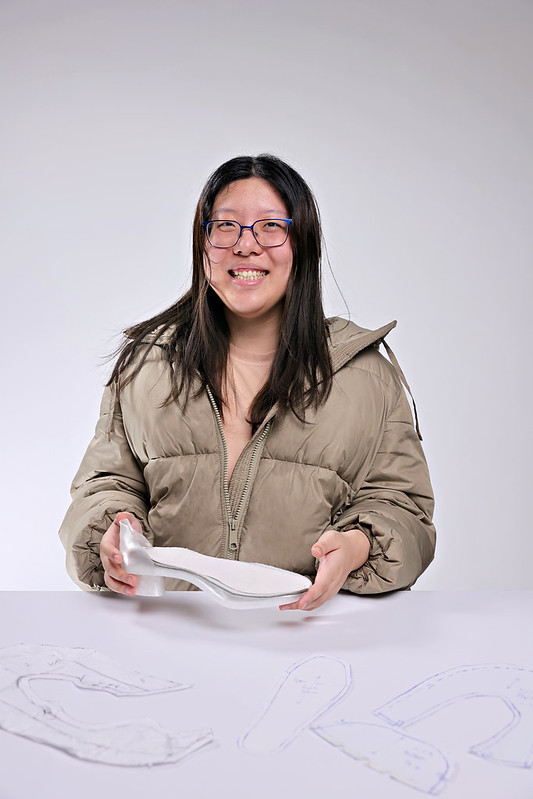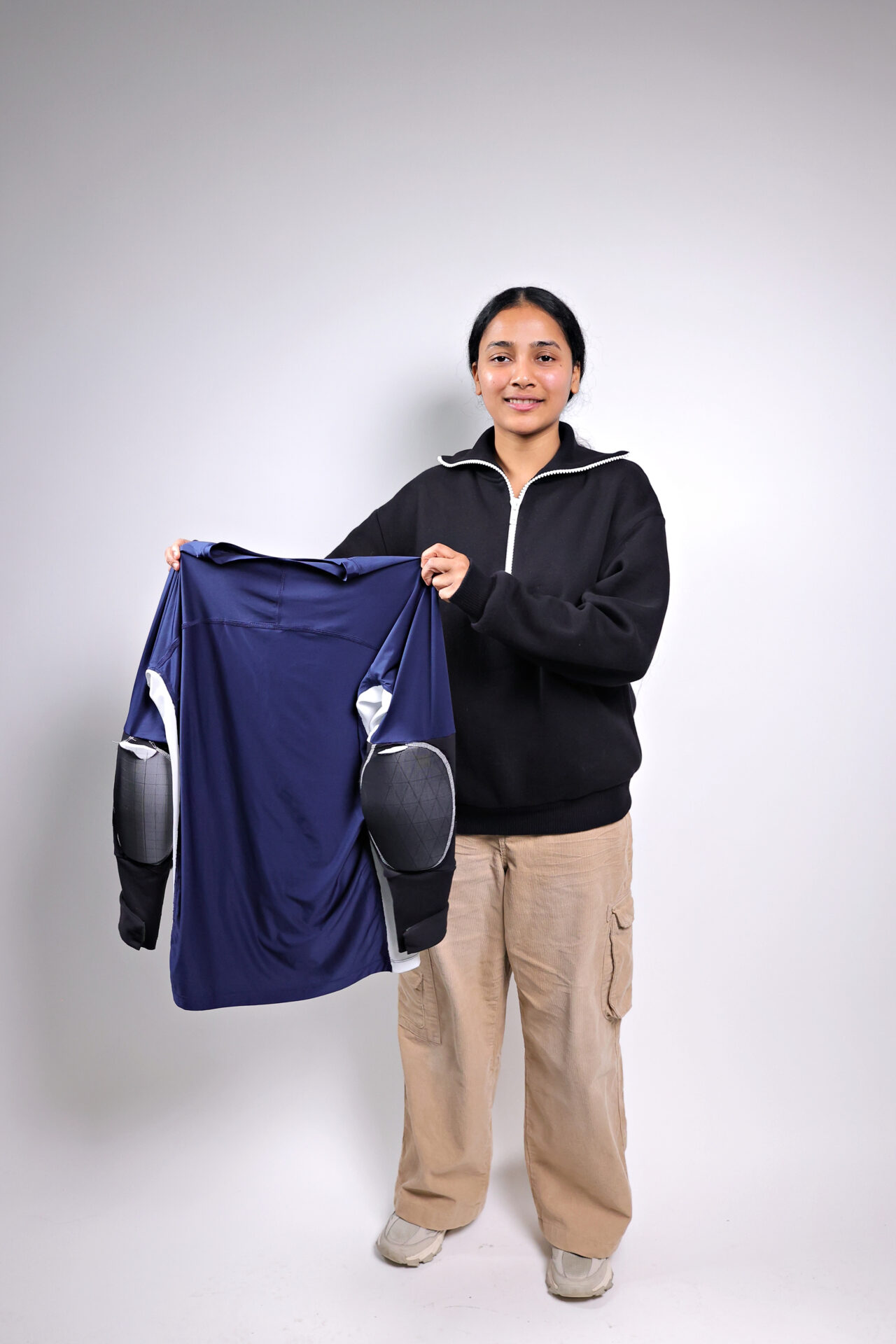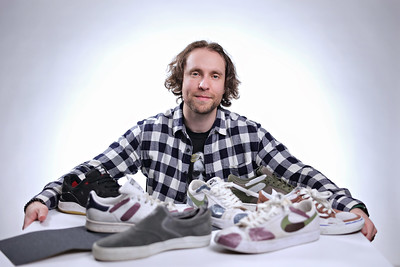The Wilson School of Design, in partnership with local textile recycling initiative Our Social Fabric, is pleased to present this year’s Upcycled Design Competition with the theme of “Gaia”. Ten finalists created a 3-dimensional design using recycled textiles and found objects that address a meaningful and current topic. Read on below to see our winners!
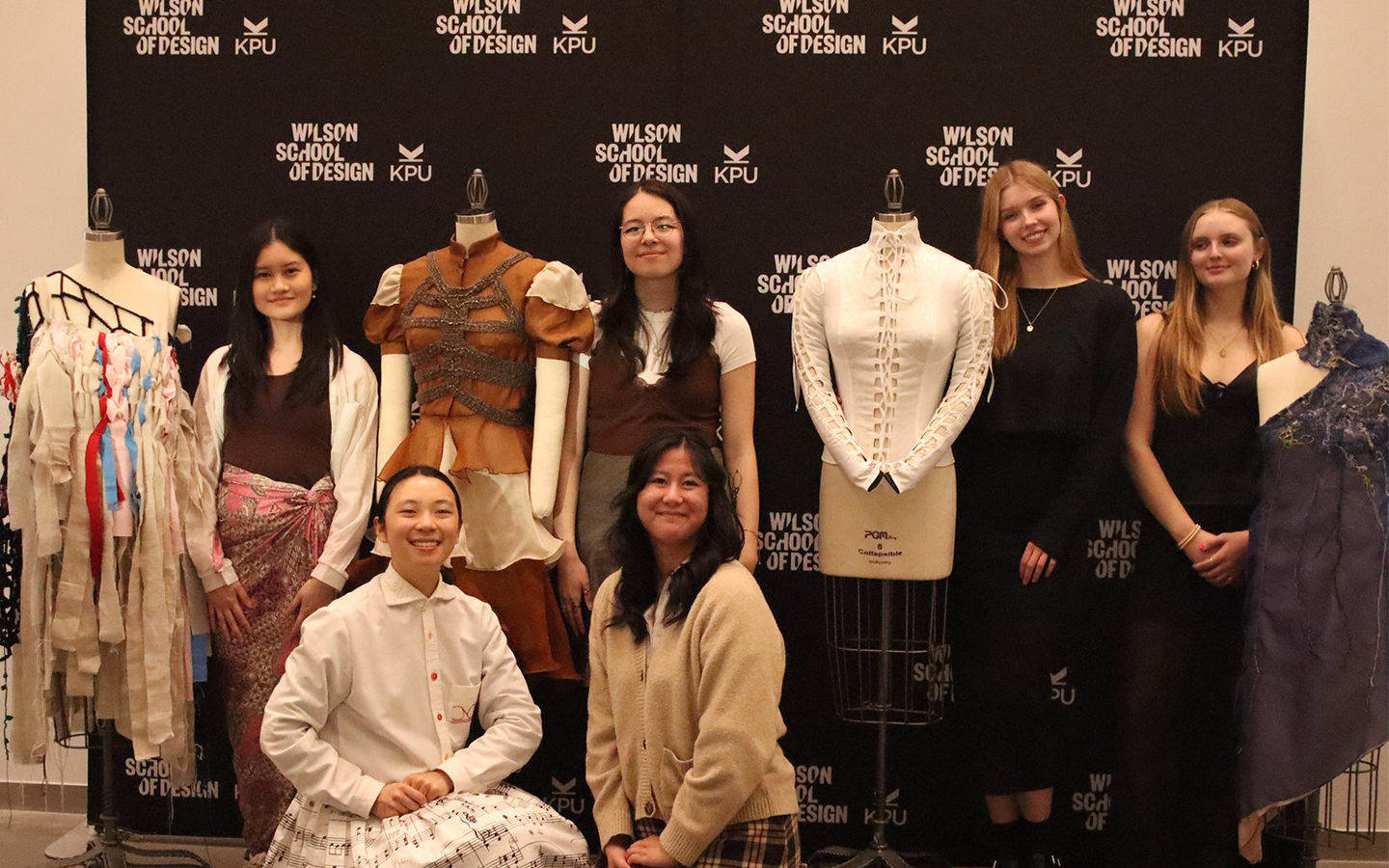
Our Social Fabric (OSF) envisions a future where no usable fabric ends up in Canadian landfills. This non-profit fabric recycling initiative, located in Vancouver, has been operating since 2009. Before its establishment, large quantities of surplus fabrics from designers, manufacturers, the movie industry, and wholesalers were consistently discarded in landfills. Today, this non-profit organization welcomes donations of these waste materials and offers them for purchase to the general public at significantly reduced prices, both through their online store and during twice-weekly sales at their distinctive brick-and-mortar store on Venables St. Over the past five years, OSF has successfully diverted an astonishing 85.5 tons of fabric and sewing-related materials from being disposed of in landfills.
The Upcycled Design Competition combines reclaimed materials with the skill and expertise of the Wilson School of Design’s students to demonstrate the viability of transforming material waste into upcycled design concepts. The goal is to create awareness of Our Social Fabric’s efforts and inspire the many talented, emerging designers at the Wilson School of Design. Further details on the submission eligibility and guidelines can be found here.
The submitted projects were evaluated on the innovative use of reclaimed materials (sourced from OSF with a maximum budget of $40), representation of “Gaia”, creativity, quality and workmanship. Four winners were selected with the first place receiving $2000, second place receiving $1500, third place receiving $1000, and the people’s choice award winner receiving $500.
First Place – Clara Devina
Second Place – Destiny Lang, Denane Tingala, and Olivia Wong
Third Place – Heidi Wilson
People’s Choice – Sophie MacFarlane
Finalists:
- Helia Abbasimoghaddasi, Anne Nguyen, and Lexie Ransom
- Eren Berg
- Elise Charpentier
- Sarah Collister
- Angela Huang and Solène Ochu
- Rebecca Male

First Place – Clara Devina
What made you choose to study at WSD? What year/program are you in right now?
Hey all! My name is Clara and I’m a third-year student in Fashion and Technology. I decided to pursue fashion in WSD as I have always been interested in how designers/pattern makers construct their garments. Moreover, during 2020, activewear became a massive trend everywhere which pushed me to seek and learn further about other kinds of fashion. After some research, WSD was the top candidate hence why I chose to study here
Why did you want to participate in the Upcycled Design Competition?
I have decided to participate in the Upcycled Design Competition as I am aware of the impact of human actions to the world. Through this competition, I can spread awareness on how impactful our actions are and how they will always impact the balance of the world, no matter how small or big they are. Therefore, it is our choice to be the destroyer or the saviour. Through this competition, I am also able to explore through my creativity and deepen my skills as I am creating something I’ve never done before.
The theme of this year’s competition is Gaia. What was your perspective on the theme and what do you hope to create through your submission? Can you give us an idea of what you plan on doing for your final submission?
The concept of GAIA is very interesting as it is new to me. As proposed by James Lovelock, the Earth is a self-regulating system created by the interactions of living organism. My perspective on this is how the world is one interconnected “web of life” and how one change can impact another. In a way, humans are also part of it, which means that we have a choice on what kinds of action we want to take. Through the concept of “web of life”, I am hoping to create a garment using the technique of crotchet to represent connections and adding on other techniques within the garment. The rest will be shown on the final garment.
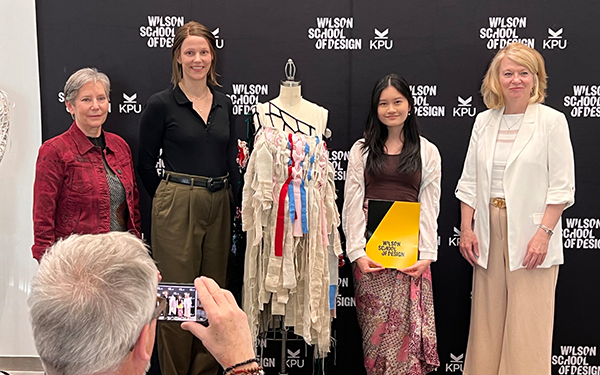
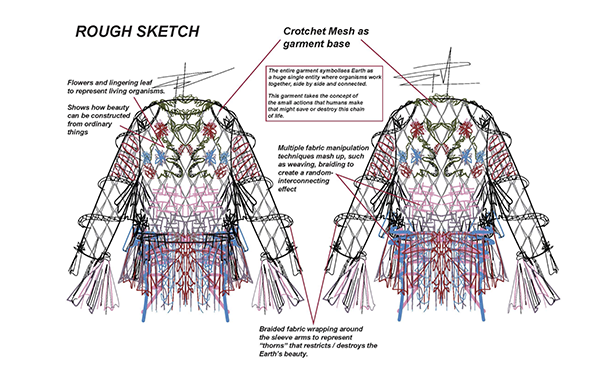

Second Place – Destiny Lang, Denane Tingala, Olivia Wong
What made you choose to study at WSD? What year/program are you in right now?
Destiny: I am a second-year Fashion Design & Technology student. In high school, I chose to study at WSD to earn a Bachelor’s in Fashion Design and become a fashion-focused home economics teacher. My home economics experience sparked my passion for apparel production, and I am interested in fostering sewing skills in youth to boost confidence and capabilities. However, I am also curious about the technical aspect of local apparel industry in Vancouver and building connections within it, which is why WSD is my top choice for exploring possibilities in fashion and technology.
Denenae: My name is Denenae Tingala and I am in first-year studying in the FIND (Foundations in Design) program! As a first-year university student who came straight from high school, all I knew I was the type of person who thrives in small class sizes and dreams of becoming a Home Economics teacher in the future. When I learned about the FIND program and the opportunity to study my passions while being in a small class, I did not hesitate to make going into Wilson School of Design my top priority. I have always loved designing and sewing, it was a hobby that immediately clicked to me. I have been sewing since the eighth grade and fell in love with teaching it in my senior year. The Wilson School of Design and the FIND program was the perfect choice to help me learn and improve my skills while also giving me the confidence boost for when I continue my fashion studies in the future.
Olivia: I am in first-year in the FIND program, and given that this is my first university experience, I felt that WSD would be a welcoming and friendly environment for me. I’ve always been a creative person, but nailing down exactly what I wanted to study has been difficult. I entered the FIND program to gain experience in design and to figure out exactly what I wanted to pursue. I mainly have a background in and passion for fiber art, but learning different things through WSD has been a great experience for me!
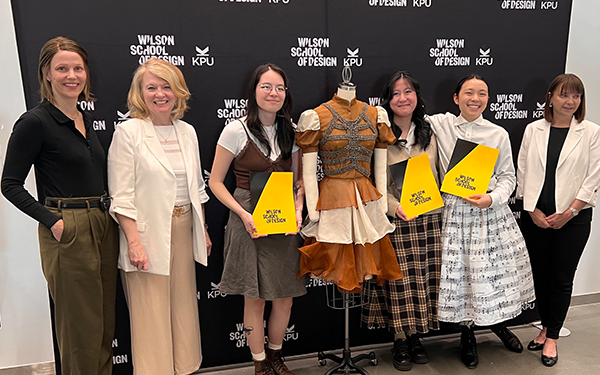
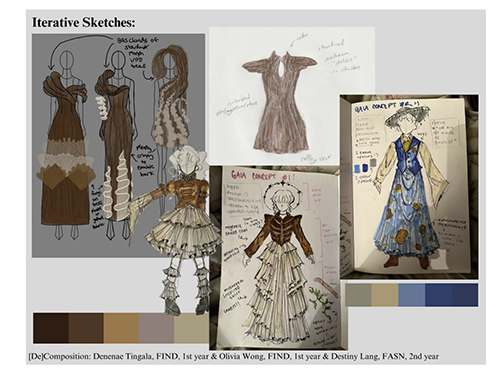
Why did you want to participate in the Upcycled Design Competition?
Destiny: I wanted to learn resourceful production skills (e.g. minimal-wastepattern cutting techniques) to prepare for the 4th year zero-waste design class. Lesley, one of my instructors and mentors for the OSF competition, shared that her students who were finalists in previous upcycling competitions went on to develop innovative ways to cut patterns resourcefully from limited resources. Upcycling encourages me to consider how I can save as much material as possible that otherwise would be out of use or disposed of.
Denenae: The Upcycled Competition really caught my eye as I wanted to challenge myself in learning new techniques and ways to be more sustainable. I am very much a stereotypical consumer, I love shopping, but I never really thought about how it impacts the earth. As my new year’s resolution, I am challenging myself to upcycle old clothes and turn it into something new and use every scrap of fabric I have in stock. The Upcycled competition just lined up with my peaking interest in upcycling fashion and I am learning so much from pattern drafting and reducing waste.
Olivia: I often take thrifted/old sweaters and unravel them for yarn, so I already have some upcycling experience. This competition is a way for me to expand my horizons with upcycling materials, and is also an opportunity to collaborate with others for a good cause. The theme this year was also really inspiring to me.
The theme of this year’s competition is Gaia. What was your perspective on the theme and what do you hope to create through your submission? Can you give us an idea of what you plan on doing for your final submission?
Connecting Gaia theory with the fact that we are using upcycled materials, we want to show how you can create something new and beautiful through sustainable and inexpensive means. Capitalism has caused us to prioritize growth at the cost of our health, well-being and future, but we can break free from this systemic constraint imposed upon us. We also hope to fight against the stigma of death and aging that is so prevalent in the culture we live in. Instead, we will focus on the beauty found in the process of decay. Our society is so obsessed with youth and life, so we often neglect talking about or reflecting on death until it occurs in our lives. We plan to showcase death in a way that is both beautiful and necessary. Life and death work in an interconnected.

Third Place – Heidi Wilson
What made you choose to study at WSD? What year/program are you in right now?
I am a second year fashion design and technology student. I chose to study at the Wilson School of Design because I felt it would be the best university to prepare me for my career – I loved how the program seemed to be not only creative but also very hands on and practical. After having studied here for two years now, I can say that the school has definitely met, and surpassed, my expectations. It truly has allowed me to channel my creativity into meaningful projects that help prepare me for a job in the industry.
Why did you want to participate in the Upcycled Design Competition?
I was initially inspired by the amazing submissions that last year’s participants had created as they were so interesting and thought provoking. Sustainable fashion design has also always been important to me, so I was excited about the opportunity to create something out of up-cycled materials while also following the meaningful theme Gaia.
The theme of this year’s competition is Gaia. What was your perspective on the theme and what do you hope to create through your submission? Can you give us an idea of what you plan on doing for your final submission?
Because Gaia essentially encompasses the idea that everything in the world is interconnected and meant to function as part of one holistic system, I wanted to consider how human actions impact Gaia. As a result, I am creating a garment that represents the beauty of Gaia when it is undisturbed, but when it is unraveled, it depicts the harsh reality of humans’ mistreatment of Gaia’s balanced system.
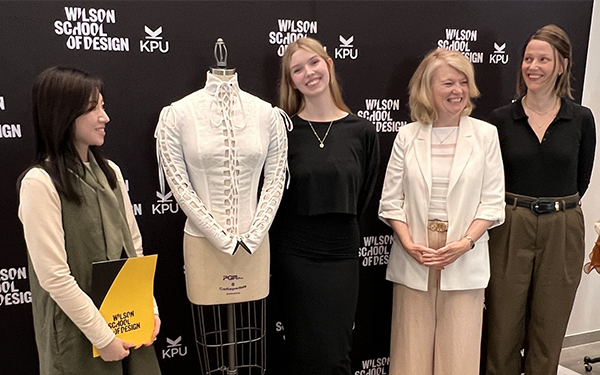
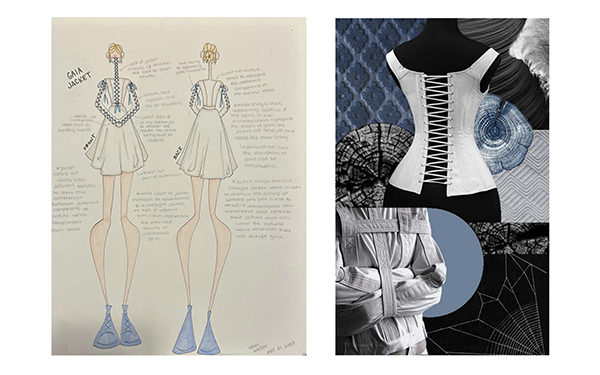

People’s Choice Award – Sophie MacFarlane
What made you choose to study at WSD? What year/program are you in right now?
I chose to study at the WSD to further expand my knowledge, helping me achieve my goals and reach my dreams regarding a career in the fashion industry. The intimate cohorts, inclusive atmosphere and incredible programs offered at the school, really drew me in. I am currently a second-year Fashion Design and Technology student and so far, I have had an amazing experience.
Why did you want to participate in the Upcycled Design Competition?
I have always been passionate about sustainability, constantly learning and implementing more eco-conscious habits into my daily life. When designing and creating, I enjoy finding ways to implement sustainability; looking at not only the garment but the garment’s lifespan. As I believe when we create something, we are responsible for its disposal. When I heard about the Upcycled Design Competition, I was eager to challenge myself to make use of deadstock materials from Our Social Fabric to create a design that showcases textile sustainability.
The theme of this year’s competition is Gaia. What was your perspective on the theme and what do you hope to create through your submission? Can you give us an idea of what you plan on doing for your final submission?
Gaia theory suggests that all living organisms on planet Earth contribute to the self-regulating system that sustains Earth’s inhabitable conditions. As all living organisms work together to make life inhabitable, once there is a disruption to one organism, there is now a disruption to life as a whole. My design intends to bring awareness to the environmental issue that is microplastic fibres; provoking discussion on the repercussions of human actions. The introduction of synthetic fibres and modern technology within the fashion industry has had many consequential issues; one being, microplastic fibres. Microplastic fibres are tiny, thread-like fibres from synthetic textile materials; most commonly polyester. Each time we wash our clothing, as many as 700,000 microfibres can be released (Williams, 2016). These microplastics shed due to friction and turbulence during washing; entering our wastewater, and ending in our oceans. My design aims to contrast fluidity with tension by blending the soft, draped silhouette (symbolizing the beauty of Gaia), with the rough, tangled, irregular fabric (representing the human disconnect to the planet). James Lovelock (the creator of Gaia Theory) states that “we’ve lost touch with the natural world and are unaware of the changes that happen in it.” My goal is to help others regain connection with our extraordinary home and all it has to offer; developing mindful awareness towards how we care for it.
